This is a modified version of an existing program to make it more suitable for soccer. The template I’m using is Westside For Skinny Bastards 3, specifically the Speed & Strength Template. If you wish to change any of the gym exercises then visit the original article to see the options you have available.
Monday
Monday is the first upper body session. In the original it suggests 2 sets of 3 reps for the bench press, which is to maintain current strength levels. If you already lift weights then it is fine to stick to that, otherwise for untrained players I recommend a basic 3 sets of 6-8 reps here. The rest of the session is pretty standard, note that C1 and C2 mean you should complete exercise C2 immediately after C1, with no rest.

Tuesday
Tuesday is the speed session. After warming up with skipping, light jogging etc. I recommend Limber 11 for mobility work, and Around The Square and Wideouts for Frequency drills. The original article only gives this session as a guideline which you are to modify based on your needs. Football is a lot of short bursts and you’ll rarely go flat out for 40 metres, so I have a suggested progression below. Should you wish to minimise the risk of a hamstring injury these runs could be performed on a slight incline.

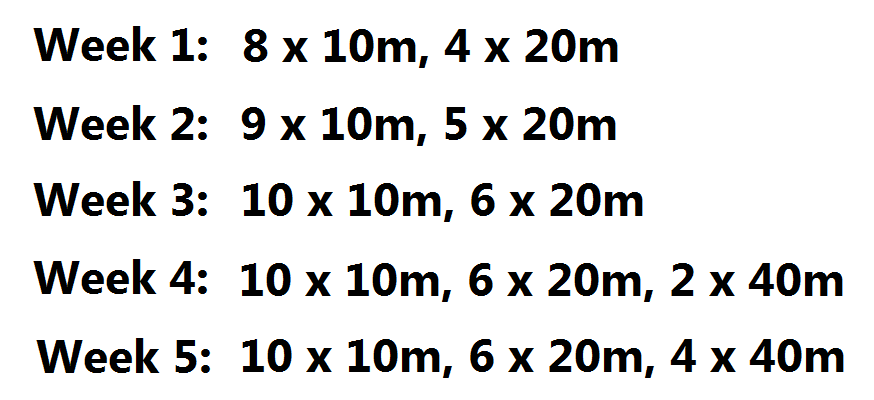
Thursday
Wednesday is a day off, where I would strongly recommend some mobility and stretching, possibly some soft tissue work to make sure you’re recovering optimally. Thursday is lower body weights and much like Monday I recommend 3 sets of 6-8 reps for the first exercise.
The hex bar deadlift is a lower-back friendly version of a regular deadlift, but if you don’t have that bar available then your next best choice would be a barbell back squat. For conditioning you can find 50 great ideas in the GreySkull conditioning PDF and the goal is to complete one in under 10 minutes.

Friday
Friday sees the second upper body session. If you are familiar with the first WS4SB program this is the “repetition” upper body day. I chose several body-weight exercises as that’s always a good place to start. If you don’t have access to the gym or don’t want to train six days per week then this would be the least important session. Completing a small upper body circuit at home would be better than missing it entirely.
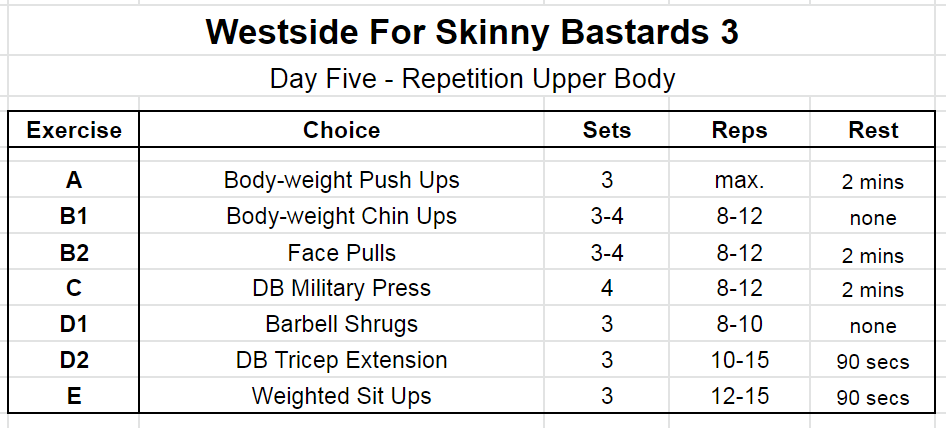
Saturday
This is the conditioning day, where you will do Interval Training. You should recognise the warm up from the speed session, and even though you aren’t going 100% it’s good to be fully warmed up. There is a great warm up routine for A: General Warm up specifically for running which you could do here and on Sunday. I have the suggested progression below and having tried it I can say it worked really well for me.
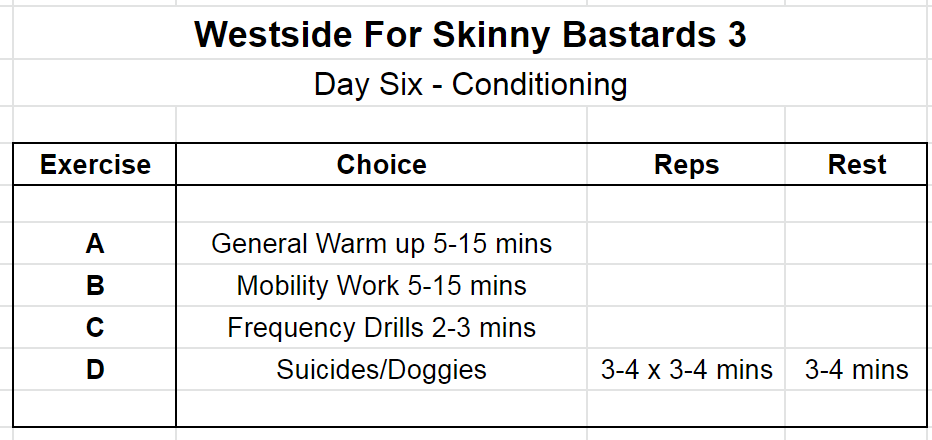
The rest should be active rest, so either walking or jogging. This simulates a game situation where you rarely get the chance to stand perfectly still for a long period of time. It should be a moderate pace so that you feel out of breath by the time it’s over.
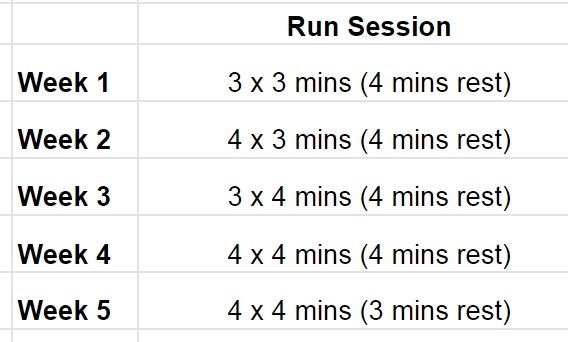
If you want to incorporate a skill element then one option is to dribble with the ball for some of the runs. Here I’ve outlined dribbling out to the 18 yard box, leaving the ball, and picking it up on your next run to take it to the halfway line, and so on. This is a nice compromise because running constantly with the ball may reduce your overall pace too much and mean you aren’t improving your fitness.
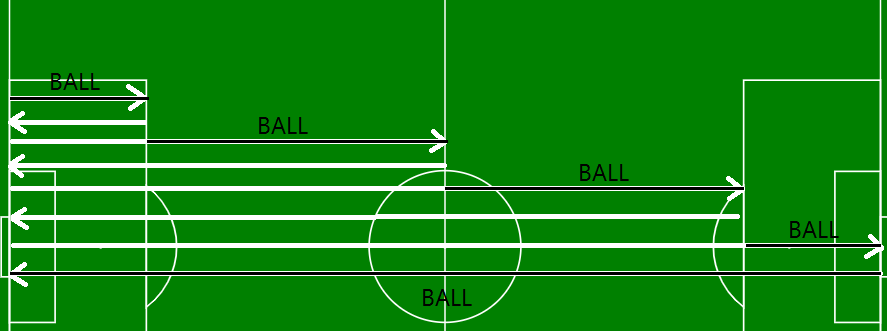
Sunday
In the original the Sunday is a second rest day, but that neglects a key aspect of fitness. American Footballers cover an average of 400 metres per game, while professional soccer players are closer to 11km. With that in mind, additional fitness is needed. A simple progression would be to run 30 minutes on the first Sunday at a steady pace, and each week run for 5 minutes longer. This is only an example and you could start at 25 minutes in week 1, meaning by week 5 you are running for 45 minutes, the length of half a game.

Interval training increases the muscular output that your body can achieve, while aerobic training is working on how much bloody your heart can send to those muscles. The combination of both leads to optimal improvements in fitness, in a ratio of 4:1 of Aerobic: Interval training.
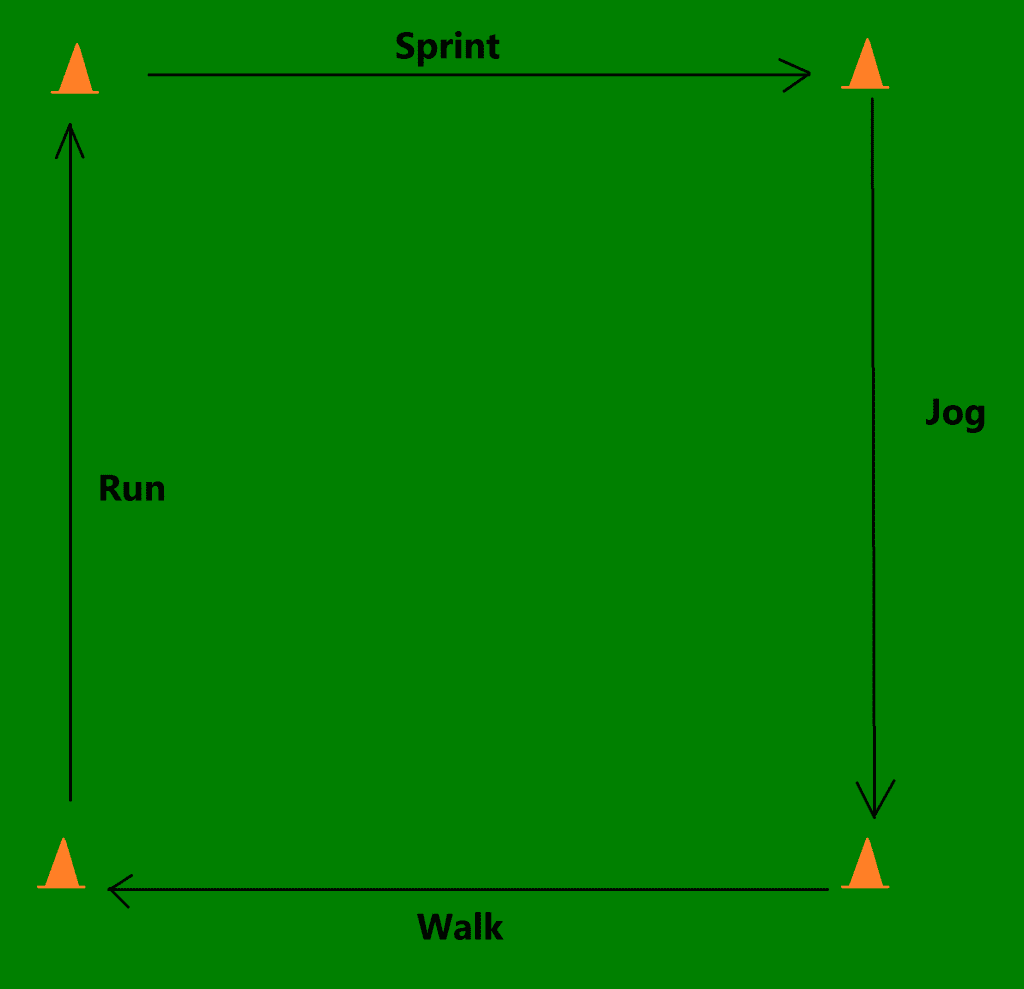
This program neglects any skill work as it is up to the player to include those, or to attend team training as well as/in place of other days listed here. For example instead of a 30 minute steady run that could be a 30 minutes 5-a-side game in training, with extra conditioning elements such as touching your own goal posts every time your team score. A more creative way to include running might be to do laps of the pitch, running the length and jogging the width.

My final recommendation is to measure your fitness before and after the 5 weeks to see if you have improved. Here is a list of my tests, split into basic physiology, explosive power/strength and endurance. I pulled my hamstring during the program so was unable to complete the power exercises but still saw improvements in resting heart rate and 0.7kg weight loss. My injury and bleep test results caused me to make the above amendments to the program.

